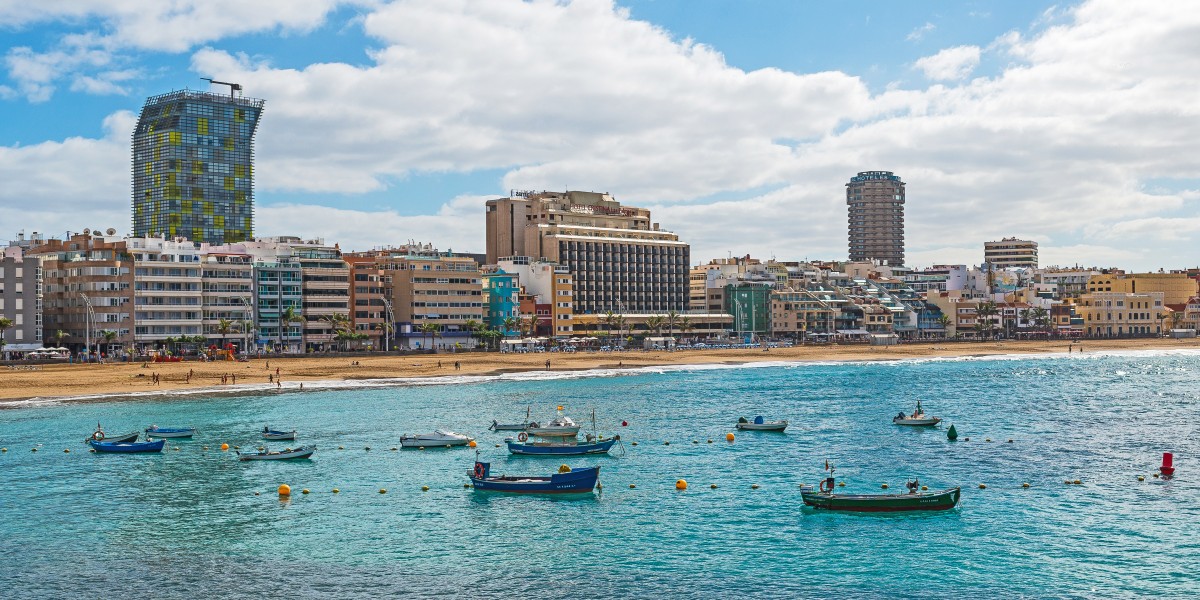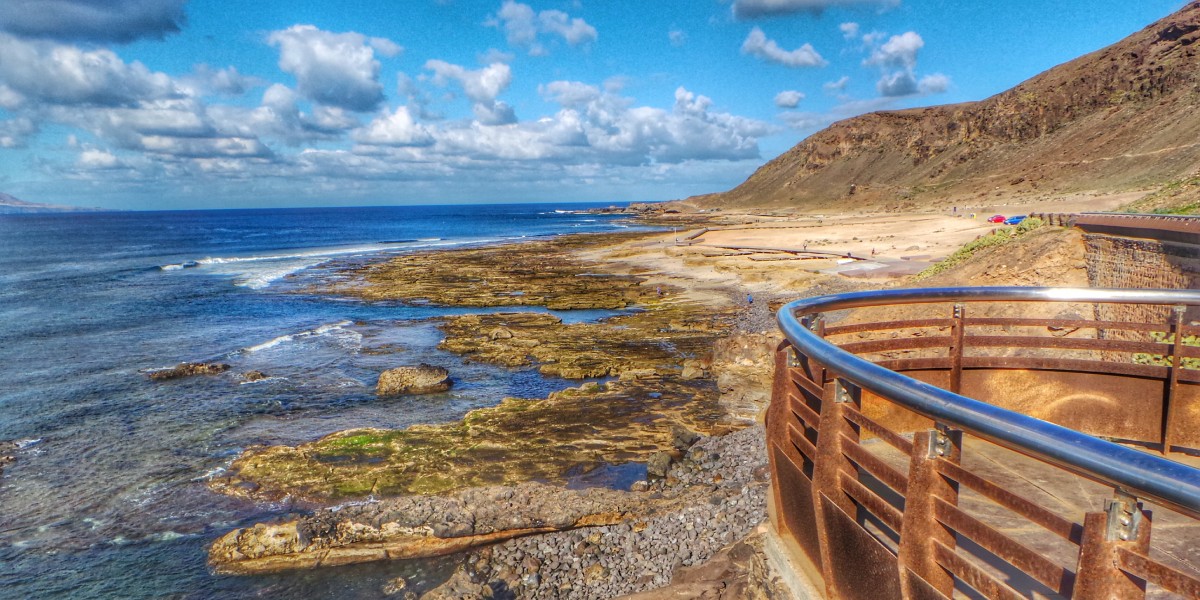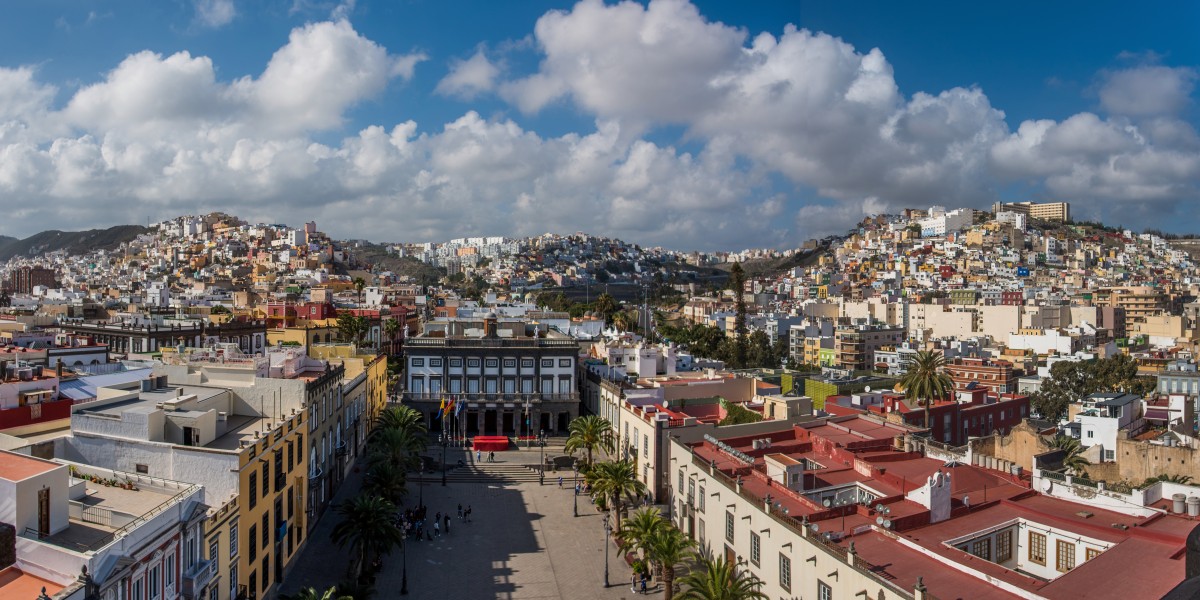
Living on Gran Canaria blends proper city life with an easy island rhythm. The microclimates are real: cooler and more local up north, warmer and drier around Maspalomas, and greener villages tucked into the interior. Think a pre‑work surf or a weekend hike, hearty food at a neighbourhood bar, and a slower pace that still keeps you connected to mainland Spain and beyond.
What’s it like living on Gran Canaria
Living on Gran Canaria feels laid‑back but not sleepy, with a real city pulse and a year‑round outdoor rhythm. The island’s volcanic backbone drops into deep barrancos and a mix of golden and darker sands. Weekends swing between hiking high ridges like around Roque Nublo and easy swims or beginner surfing. Winds keep things fresh, calima can roll in now and then, and the microclimates are striking, so you learn to check the forecast before setting off.
Culture is distinctly Canarian: sociable plazas, timple music at fiestas, late lunches, and simple, good food like papas arrugadas with mojo. Getting around and staying connected is straightforward: Gran Canaria Airport (LPA) has frequent flights to the UK and mainland Spain, inter‑island hops are quick, and there are plenty of ferries link to Tenerife and beyond.
Living in Gran Canaria: pros and cons
Life here is easygoing and outdoorsy, but there are a few disadvantages of living on Gran Canaria to weigh up alongside the sunshine and sea.

Some of the pros of life in Gran Canaria include:
- Year‑round climate and an active lifestyle: beach swims, weekend hikes, and cycling the mountain roads.
- Everyday costs eased by the Canary Islands’ lower sales tax (IGIC), plus good value local produce and fresh fish.
- Frequent flights to the UK and mainland Spain, quick inter‑island hops.
A few cons to consider:
- Housing pressure in the south during winter, with long‑term rentals tighter and pricier in places like Maspalomas and Puerto de Mogán.
- Lower average wages than mainland hubs, with Spanish needed for most on‑site jobs.
Is Gran Canaria expensive to live?
The cost of living on Gran Canaria is generally moderate by Spanish standards, with everyday spending feeling kind on the wallet. Think €10 for a cheap main, about €45 for a mid‑range dinner for two, €3.25 for a beer, €2.10 for a cappuccino, and roughly €1.60 for a fresh loaf.
Basic utilities for an 85 m² flat average about €92 per month. Public transport is currently free for registered Canary Islands residents using the official travel cards and meeting a minimum monthly trip threshold. The scheme is reviewed periodically, so it’s worth checking the latest terms before relying on it long‑term.
As for housing, as of September 2025, property prices in the province of Las Palmas averaged around €2,800 per m², while property prices in Las Palmas de Gran Canaria were about €2,463 per m².
Rent prices in Las Palmas de Gran Canaria averaged €13.8 per m² in the same month, so an 80 m² apartment would be roughly €1,104 per month. Southern hotspots such as Playa del Inglés and Maspalomas can top €20 per m², while Santa Lucía de Tirajana trends cheaper.
Compared with Madrid or Barcelona, eating out and rents in Las Palmas usually come in lower, nudging the island towards a moderate overall cost of living, with a premium in tourist zones during winter.
Where to live on Gran Canaria
Finding the best place to live on Gran Canaria really depends on your lifestyle choice, work situation and budget. Choose between the buzzing capital, coastal towns, and quiet inland villages.

Las Palmas de Gran Canaria (city life with a beach)
Life in the 9th most expensive city to live in in Spain centres on the golden curve of Las Canteras, where morning swims and post‑work strolls are the norm, and the surfier La Cícer end buzzes with cafés. Inland, Vegueta and Triana bring handsome old‑town streets, galleries and good tapas, while Guanarteme stays lively with coworking spots and bars. It feels properly urban without losing the seaside rhythm.
Who it suits: remote workers, singles and couples who want an urban‑beach setup, culture lovers, and families happy in apartment living near schools.
South coast: San Bartolomé de Tirajana area
Sunny most of the year, the south is all about the Maspalomas Dunes, one of the most famous beaches in Spain to live on. Meloneras feels polished with seafront walks and hotels, while Playa del Inglés brings nightlife and English‑speaking services. Expect bungalow complexes, villas and serviced apartments, with prices climbing in winter as snowbirds arrive.
Day‑to‑day is easygoing, beach‑first living, so it's no surprise it's the most expensive area to buy property in the Canary Islands, with average prices of around €4,710 per m2 in September 2025, and as much as €5,769 m2 in Maspalomas.
Who it suits: retirees, hospitality workers on seasonal contracts, beach‑loving families, golfers and walkers who want guaranteed sun.
South‑west: Mogán
Sheltered bays and marinas give the south‑west a calmer, nautical feel, with terraced apartments stepping down the hillsides for big sea views. Arguineguín has a year‑round Scandinavian community and good fish restaurants, Puerto Rico is practical with shopping and beaches, and Puerto de Mogán is photogenic around its old harbour.
Long‑term rentals can be scarcer in peak winter, but the microclimate is famously gentle. Life is slower, sun‑soaked and outdoorsy.
Who it suits: sunseekers, retirees, boating and paddle‑boarding fans, remote workers who don’t need big‑city bustle.

East and commuter belt: Santa Lucía de Tirajana
More local and good value, Telde mixes historic streets with handy retail parks and quick links to Gran Canaria Airport (LPA). The town is one of the places with the cleanest air in Spain, thanks to island winds,
You'll also find family‑friendly beaches like Melenara and La Garita. Vecindario in Santa Lucía de Tirajana is practical, flat and well connected by bus and motorway, with plenty of services and everyday Canarian life.
Housing ranges from simple flats to townhouses, and you’re midway between the city and the south.
Who it suits: budget‑minded families, commuters, airport and logistics workers, people who want straightforward living and space.
North Gran Canaria and its villages
Greener, cooler and more traditional, the north offers handsome small towns and quick escapes to the mountains. Arucas charms with its volcanic‑stone cathedral and colourful streets, Agaete and Puerto de las Nieves are about whitewashed houses, fresh fish and ferries to Tenerife, Gáldar blends surf spots with pre‑Hispanic heritage at Cueva Pintada.
Teror, the cheapest town to buy property anywhere on the Canary Islands, is all wooden balconies and Sunday markets, while Santa Brígida and nearby Tafira suit families after gardens and space within reach of the city.
Who it suits: families wanting space and greenery, hikers and cyclists, culture buffs who prefer a local vibe with manageable commutes.
Jobs in Gran Canaria
Work in Gran Canaria clusters around tourism and hospitality, retail, and port‑linked logistics. There is also a growing remote‑work scene in Las Palmas de Gran Canaria. The south swings into high gear for winter season hiring, while the capital ticks over year‑round with roles in hotels, restaurants, shops, call centres and healthcare.
Speaking Spanish is a big plus for on‑site work, and English or German helps in tourist zones. Pay tends to be lower than Madrid or Barcelona, with hospitality roles near the national minimum, so many people mix shifts with freelance or remote gigs.
UK nationals need the right paperwork post‑Brexit: a work permit tied to a Spanish contract, or the Digital Nomad Visa if income is from abroad. Expect interviews to be in Spanish, contracts to reference seasonal hours, and hiring to ramp up late summer for the winter season.

Living in Gran Canaria as an expat
Gran Canaria is friendly and uncomplicated once you learn a bit of Spanish and lean into local rhythms. You’ll find a mixed community of long‑term residents, seasonal workers and remote folks, plenty of coworking, language exchanges, and an island calendar full of romerías and fiestas.
Day‑to‑day admin is manageable: register on the padrón at your ayuntamiento, sort your NIE/TIE, open a bank account. You’re set up for healthcare with the Servicio Canario de la Salud once you’re employed, autónomo or otherwise eligible. Families look at international schools such as the British School of Gran Canaria, Canterbury School, Oakley College, American School of Las Palmas and Colegio Arenas.
If you're from the UK, you’ll need the right residence route, then register your social security if working, and plan for tax residency after 183 days. Everyday integration is easy enough: join hiking or cycling groups for the interior, try a surf lesson at La Cícer, find intercambio meetups in Vegueta, and use coworkings like Repeople to widen your circle.

Where do expats live in Gran Canaria?
Las Canteras / Guanarteme (Las Palmas): urban‑beach living with cafés, surf and coworking. Popular with digital nomads and long‑stayers.
Vegueta / Triana (Las Palmas): historic streets, culture and good transport. Suits city lovers who want character.
Tafira / Santa Brígida: greener, villa‑style homes near top schools. A favourite for families wanting space within easy reach of the city.
Maspalomas / Meloneras / Playa del Inglés: resort convenience, year‑round sun and English‑speaking services. Common for retirees and seasonal hospitality workers.
Puerto Rico / Arguineguín / Puerto de Mogán: sheltered south‑west with marinas and a strong Scandinavian presence. Relaxed, sea‑focused living.
Telde / Vecindario: practical and better value with good links to the airport, the south and Las Palmas. Handy for commuters and budget‑minded households.

Stay in the know about living in Spain as a foreigner—get our weekly newsletter for the latest travel, legal, and lifestyle news.
For a taste of the high life, sign up for the monthly luxury market round-up.

